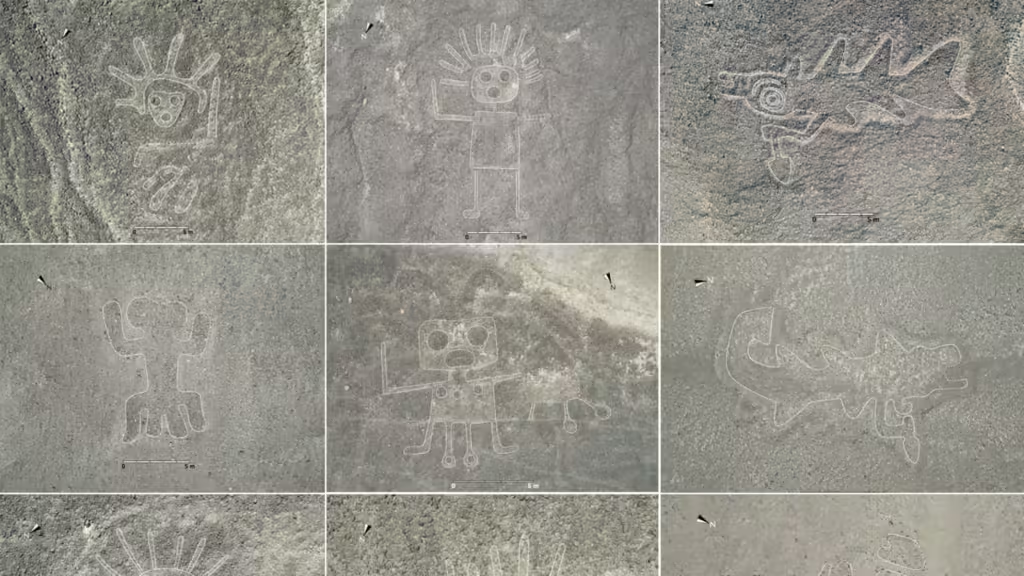Archaeologists using artificial intelligence AI uncovers 303 new geoglyphs near the famous Nazca Lines in Peru. These new figures, which depict animals like parrots, cats, monkeys, killer whales, and even decapitated human heads, add 303 previously unknown geoglyphs to the collection. This discovery nearly doubles the number of known geoglyphs at the mysterious 2,000-year-old archaeological site.
Read Also: Middle East Invest into AI, Glowing the Future of Tech
The team responsible for the discovery comes from the Nazca Institute at Yamagata University in Japan, working in collaboration with IBM Research. They used advanced AI systems to identify the new geoglyphs, which are smaller than the large geometric patterns that already cover over 400 square kilometers of the Nazca plateau. These larger patterns were created by the Nazca culture between AD 200-700, while the newly discovered geoglyphs date back even further to around 200 BC.
These new geoglyphs offer fresh insights into the transition from the Paracas culture to the Nazca people, who later made famous figures such as the hummingbird, monkey, and whale that are part of the Unesco World Heritage Site. The Nazca Lines are Peru’s most famous tourist attraction after Machu Picchu.
Masato Sakai, an archaeologist from Yamagata University, said that using AI in research has allowed the team to map out geoglyphs faster and more accurately. The combination of AI with low-flying drones has significantly improved the speed at which new geoglyphs are found. In a research paper published in the Proceedings of the National Academy of Sciences (PNAS), it was highlighted that while it previously took nearly a century to discover 430 Nazca geoglyphs, the AI system found 303 new ones in just six months.

The AI model was especially effective in spotting smaller geoglyphs that are difficult to see with the naked eye. It also analyzed large amounts of geospatial data gathered by drones to pinpoint areas where more geoglyphs could be hiding.
Peru’s chief archaeologist for the Nazca Lines, Johny Isla, explained that drones combined with AI have transformed archaeological research. A drone can cover large areas in just a day, a task that used to take years when done manually. The newly discovered geoglyphs are relatively small, measuring only three to seven meters across, which is why they had been missed by previous flyovers that uncovered larger figures and shapes on the desert plain.
The famous Nazca Lines attract thousands of tourists every year. They include a variety of figures, such as the “astronaut” and many vast geometric patterns that stretch for miles. However, the new geoglyphs differ from these well-known figures. According to Isla, the newly discovered geoglyphs may have been made by humans for humans, often depicting scenes from everyday life. In contrast, the large Nazca figures were likely created for gods and carried spiritual meanings, especially related to water and fertility.
The new geoglyphs include figures of wild animals, abstract humanoid shapes, and even humans holding decapitated heads. These could have been used as markers or symbols of family groups, rather than holding the ritual importance of the larger figures made by the Nazca culture.





